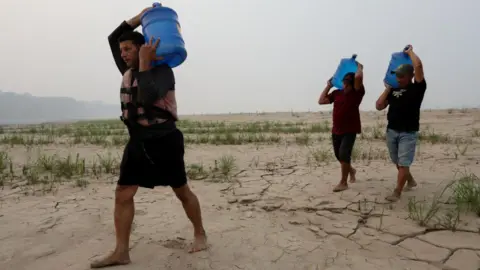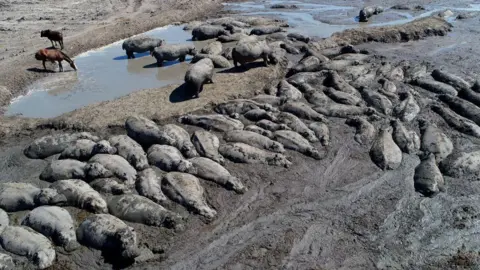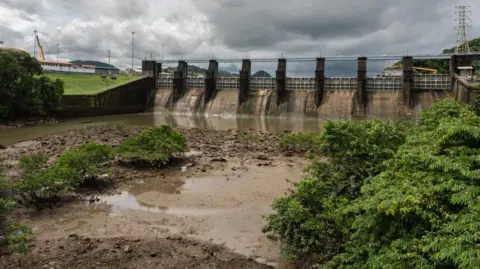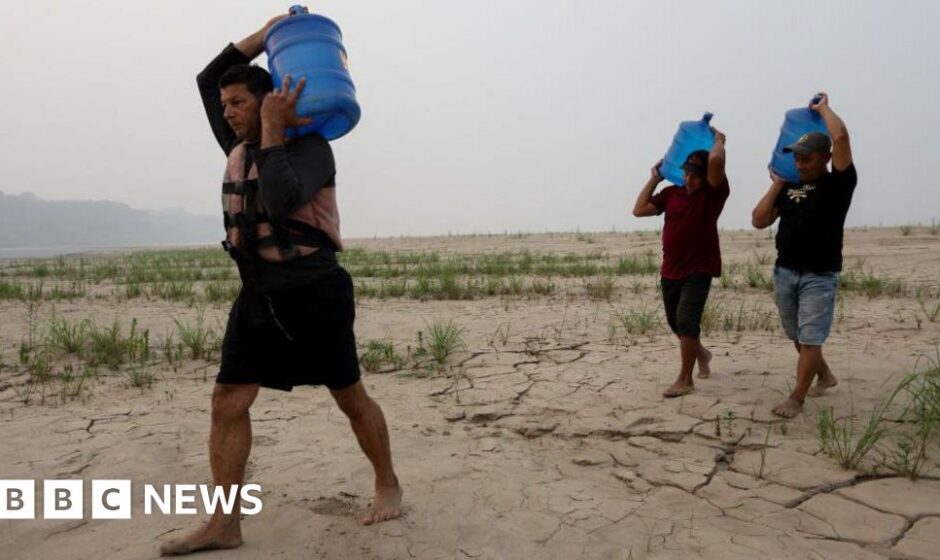Climate and science reporter
 Getty Images
Getty ImagesFrom Somalia to mainland Europe, the past two years have seen some of the most ravaging droughts in recorded history, made worse by climate change, according to a UN-backed report.
Describing drought as a “silent killer” which “creeps in, drains resources, and devastates lives in slow motion” the report said it had exacerbated issues like poverty and ecosystem collapse.
The report highlighted impacts in Africa, the Mediterranean, Latin America and Southeast Asia, including an estimated 4.4 million people in Somalia facing crisis-level food insecurity at the beginning of this year.
It recommends governments prepare for a “new normal” with measures including stronger early warning systems.
“This is a slow-moving global catastrophe, the worst I’ve ever seen,” said co-author Dr Mark Svoboda, founding director of the US National Drought Mitigation Center.
“This report underscores the need for systematic monitoring of how drought affects lives, livelihoods, and the health of the ecosystems that we all depend on.”
The Drought Hotspots Around the World report identifies the most severely impacted regions from 2023 to 2025.
During this time, the warming effects of climate change were made worse by an El Niño, a natural climate phenomenon that affects global weather patterns.
An El Niño happens when surface waters in the eastern and central tropical Pacific Ocean become unusually warm.
It often leads to drier conditions in regions such as southern Africa, parts of south-east Asia, northern South America, and south-east Australia.
Pressure from humans, for example the use of irrigation in agriculture, has also put a strain on water resources.
Drought-linked hunger
By January 2023, the worst drought in 70 years had hit the Horn of Africa, coming from years of failed rainy seasons in Kenya, Ethiopia, and Somalia.
This followed the deaths of an estimated 43,000 people in Somalia in 2022 from drought-linked hunger.
African wildlife was also affected, with hippos in Botswana stranded in dry riverbeds, and elephants culled in Zimbabwe and Namibia to feed hungry communities and prevent overgrazing.
 Getty Images
Getty ImagesThe report highlights how drought hits the world’s most vulnerable people including women hardest, with often far-reaching impacts on society.
Forced child marriages more than doubled in four regions of Eastern Africa hit hardest by drought, as families scrambled to secure dowries to survive, it noted.
“The coping mechanisms we saw during this drought grew increasingly desperate,” said lead author Paula Guastello. “Girls pulled from school and forced into marriage, hospitals going dark, and families digging holes in dry riverbeds just to find contaminated water – these are signs of severe crisis.”
While low- to middle-income countries bore the brunt of the devastation, none could afford to be complacent, the report says, noting how two years of drought and record heat cut Spain’s olive crop in half.
In the Amazon basin, record low water levels killed fish and put endangered dolphins more at risk as well as hitting drinking water supplies for hundreds of thousands of people.
And drought even had an effect on world trade – between October 2023 and January 2024, water levels fell so much in the Panama Canal that daily ship transits dropped from 38 to 24.
 Getty Images
Getty Images“Drought is not just a weather event – it can be a social, economic, and environmental emergency,” said report co-author Dr Kelly Helm Smith.
“The question is not whether this will happen again, but whether we will be better prepared next time.”

#droughts #slowmoving #global #catastrophe



